Visitors to progressivecattle.com increased dramatically in the past year, growing 68 percent to 42,968 unique visitors. The pageviews also soared – more than doubling from 89,134 pageviews in 2011 to 230,638 in 2012.
Looking back over the year, here were the 10 most-read stories among our online audience, with some updates from authors, sources and contributors.
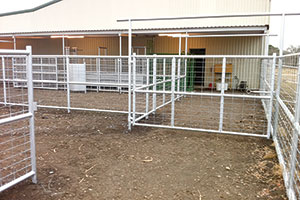 1. Design corrals to reduce cattle stress
1. Design corrals to reduce cattle stress
Click here to read the original article.
If you want your facilities and corrals to make your job easier, it all comes down to “natural flow,” according to Ron Gill with the Texas AgriLife Extension Service.
Gill and animal welfare specialist Temple Grandin noted that free movement of cattle is essential to any corral design, in this February story written by Robert Fears.
“Always design pens where you don’t have to get behind the cattle,” Gill explained. “Work from their sides where they can see you. This action maintains cattle flow and that is the objective.”
Some other key elements noted by Fears:
• Maintain a good loading chute, so cattle move easily from sorting pen into the trailer.
• Maximum width for a common alleyway used to sort cattle is 12 feet.
• Bud boxes should allow cattle to see the handler at least partially.
• Curved crowd alleys work best with some straightaway for at least two cow-lengths before the bend.
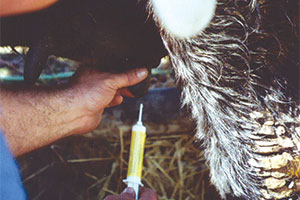 2. Practical care for mastitis in beef cows
2. Practical care for mastitis in beef cows
Click here to read the original article.
Mastitis isn’t just a malady for dairy cows, as many beef dams suffer when bacteria enter the teat canal while lying in mud or manure during calving.
It also develops at weaning when the udder is full, bruised or injured.
In this herd health article penned by Heather Smith Thomas, producers learned some of the critical steps to treating infections and the key signs to look for with cows of varying ages and possible signs of mastitis.
3. Who owns the beef cows in the U.S.?
Click here to read the original article.
While the national cow herd numbers may continue to drop due to various factors, the diversity of cattle producers in the U.S. shows broader range than one might think.
Colorado State University Beef Extension Specialist Jack Whittier provided an insightful look into the data showing variation among cow-calf producers in the country.
Author’s update: How times change. Since this survey, a major and continuing drought has hit the U.S. I suspect that when the effects of this drought shake out over the coming years, there will be even more of a shift toward larger cowherds increasingly owned by larger producers and corporations.
Why? Because with the advancing age of the average family-owned rancher, I believe as these producers sell down, or out completely, they are less likely to buy back cows.
In addition, with the competition for land uses for recreation, viewscapes and other development opportunities, many ranchers may decide enough is enough. I think this is a critical issue facing the future of the beef industry.
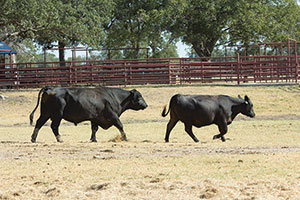 4. The impact of hot weather on bull fertility
4. The impact of hot weather on bull fertility
Click here to read the original article.
In a year when producers across Southern and Midwest states toiled with another summer drought, Oklahoma State University Cooperative Extension Specialist Glenn Selk provided a newsletter item reviewing research done over decades to determine how heat stress can impair bulls’ reproductive strength.
Several studies showed, “One cannot escape the conclusion that high ambient temperatures can result in detrimental effects on fertility by effects on both the cow and the bull,” Selk wrote.
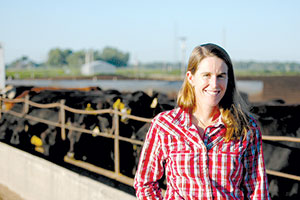 5. Anne Burkholder focuses on final product for calf success
5. Anne Burkholder focuses on final product for calf success
Click here to read the original article.
Every industry needs the infusion of new blood and new ideas.
A key example of that within the beef industry is Nebraska feedlot manager Anne Burkholder.
A Florida native and Dartmouth grad, Burkholder met her husband, Matt, in college and came with him to the family feedyard, Will Feed Inc. in Cozad, Nebraska.
Burkholder quickly took the family trade and began applying her own signature on key measures of beef quality, animal stewardship, nutrition and health controls.
In this July edition profile from writer Cassie (Payne) Webb, Burkholder shared practices that have steadily improved management of new calves in several key areas.
Q: What key beef quality measures are most vital to feedyard operators going into a new year?
I see a necessity for vertical collaboration in order to ensure high-quality holistic animal care and the most efficient production of beef.
I think that this can be a great advantage to both our industry and our beef customers. I believe that great strides in individual animal efficiency and beef quality will occur as ranchers, feeders and packers build relationships and work together to both measure and track animal performance over the entire calf life cycle.
As our production numbers continue to decrease, it becomes more and more important for cattle feeders to foster relationships with cow/calf partners and focus on improving both genetics and animal care.
The beef consumer in 2012 and beyond is very interested in “where beef comes from” and transparency across the beef calf life cycle will continue to develop in order to satisfy customer demands.
This will also add to the importance of fostering relationships all along the beef production chain. I believe that this is a time to focus on good animal genetic quality, good-quality care and minimizing animal stress to ensure that safe and healthy beef is grown using the fewest number of natural resources.
—Anne Burkholder
6. Where do Obama, Romney stand on key ag issues?
Click here to read the original article.
The 2012 election will be remembered as a contest decided largely by the economy, job creation, tax policy and federal deficits.
Yet neither President Barack Obama nor Gov. Mitt Romney said anything in their three debates about agricultural policies or the lack of a farm bill being passed by Congress.
To discern ag policies between the two major candidates, Progressive Cattleman dove into the thicket of issues important to ranchers and farmers in the 2012 election by using questionnaires and policy sheets used by the campaigns.
7. Working cattle means exposure to zoonotic disease
Click here to read the original article.
The story of Acey Shaw, a Dietrich, Idaho cow-calf producer who became ill with a serious neurological disorder after handling a newborn calf, serves as a cautionary tale for many cattlemen.
Shaw’s medical struggle originated by delivering a calf in the winter of 2011. Shaw took the calf into his truck cab, warming the animal under the truck heater.
Hours later, he was exhibiting extreme symptoms of dizziness, nausea and double vision. Weeks later, he was nearly blind.
In this account reported by Dave Wilkins, doctors told Shaw’s family his condition originated from two zoonotic diseases.
Zoonotic diseases emerge when pathogens are shared between humans and animals. While Shaw’s case is rare, the frequency of zoonotic disease pass is more common than many realize.
Wilkins’ story recounted animal-handling instances that producers need to be aware of to protect their health.
Author’s update: Acey Shaw is still in a wheelchair and unable to walk, although he’s shown some slight improvement over the past year.
“He’s still got a lot of therapy left to do,” said his wife Jalyn Shaw. “His speech is a little better and his movements are getting a little smoother.”
Doctors still aren’t certain what caused the mysterious disease but evidence still points to pathogens that Shaw was exposed to while assisting a cow with a difficult birth.
“Right now, doctors are 70 percent sure it was from the cow,” Jalyn
Shaw said.
—Dave Wilkins
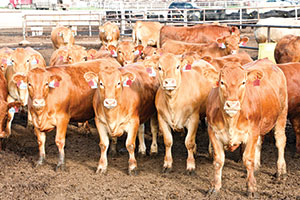 8. Akaushi: A genetic treasure
8. Akaushi: A genetic treasure
Click here to read the original article.
What started with a shipment of eight Akaushi cows from Japan in 1994 has grown steadily into an emerging presence of Akaushi cattle in the U.S.
Due in large part to a privately held – and closely guarded – set of genetics, the Akaushi brand’s growth has focused on preserving those unique traits.
Cassie (Payne) Webb’s profile on Akaushi’s growth examined beef production goals, health characteristics and beef quality associated with the emerging breed.
9. BPI shares lessons from LFTB backlash
Click here to read the original article.
Few stories rocked the beef industry in recent years like the online boycott and news coverage surrounding Beef Products Inc. and its ground beef product lean finely trimmed beef, or LFTB.
When media and petitioners discovered the nasty moniker “pink slime” to describe the 100 percent beef product, a public relations nightmare ensued.
ABC News dedicated several news reports questioning the safety and suitability of LFTB for consumers.
One month after the clamor erupted, sales of LFTB products to grocery retail chains had dropped significantly. BPI was forced to close three of its beef production operations and cut 650 jobs.
At a summer cattlemen conference, BPI Director of Technical Services Mike Rucks shared the company’s account of how it tried to provide its side during the news media onslaught and was repeatedly denied.
Fighting the criticism of its product became a losing cause when others in the industry remained silent.
“Everybody was spending an inordinate amount of time trying to find out how it was going to individually impact them first, and we lost a lot of opportunity to combat this,” Rucks said.
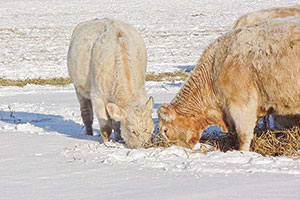 10. Extend fall and winter grazing
10. Extend fall and winter grazing
Click here to read the original article.
Producers are still seeking ways to save on winter feed costs after yet another round of drought that baked pastures and depleted the corn crop.
That’s what led readers to follow the suggestions by Heather Smith Thomas in this November 2011 story outlining possible ways to extend grazing options in colder seasons.
Options include stockpiling some acres for regrowth in fall, windrow grazing, using rake-bunched hay and rotating a field out of alfalfa and toward annual crop production. ![]()






